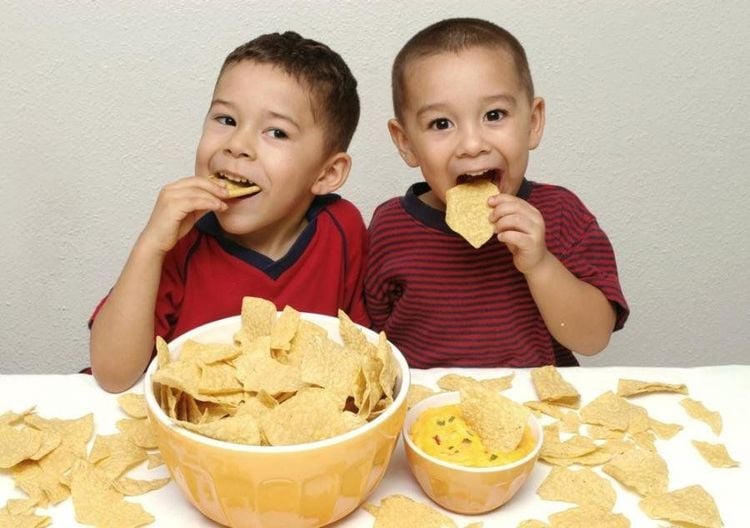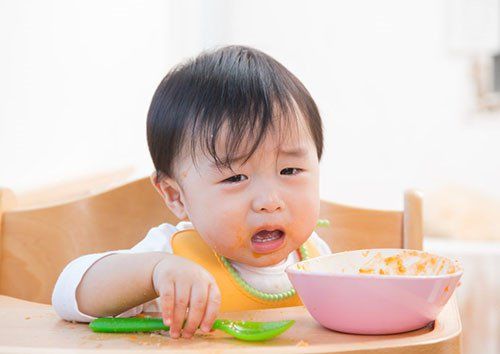This is an automatically translated article.
The article was professionally consulted by Dr., Doctor Phan Nguyen Thanh Binh - Head of the Department of Nutrition - Dietetics - Department of Pediatrics - Neonatology, Vinmec Central Park International General Hospital.Anorexia children, eating and drinking for an hour is always an obsession of many parents. Sometimes mothers get angry and stressed because they don't know how to help their children eat well, no longer suck. Severe anorexia in children is likely to lead to malnutrition or micronutrient deficiencies.
1. What is anorexia?
Anorexia is a phenomenon where children eat less than usual, eat selective foods, eat only a few foods, some children are afraid to eat, refuse or vomit when they see food, meals last too long (over 30 minutes) even hours) due to the child refusing to swallow food or refusing to eat due to many reasons.Anorexia itself is not really a disease but is often a manifestation of many different causes, which can be medical or psychological.
There are many cases where the child is not really anorexic, but due to the anxiety of parents or caregivers. Children with anorexia often have the following characteristics:
The amount of food the child eats in a day is less than the need for age. Children often constipated, the number of stools is less than normal. Children's weight growth is slower than normal or they do not gain weight or even lose weight. Anorexia in children often leads to eating behavior disorders, growth retardation, micronutrient deficiencies, ... if the condition is prolonged, it can cause malnutrition, body dysfunction, and reduced resistance. , susceptible to infections.

Trẻ biếng ăn ảnh hưởng đến phát triển cân nặng và chiều cao so với các bạn cùng trang lứa.
2. Causes of anorexia in children
2.1. Anorexia is related to children's illness Anorexia is a common symptom when children are sick. Common diseases include:Digestive disorders, gastrointestinal infections causing vomiting, diarrhea,... Acute respiratory tract infections such as nasopharyngitis, bronchitis, pneumonia,... chronic or congenital diseases such as: congenital heart disease, cerebral palsy,... Oral lesions such as: teething, tooth decay, inflammation or ulceration of the oropharynx,... Intestinal parasitic infections cause children to breathe poor nutrition and lead to anorexia. 2.2. Anorexia related to nutrition Children lack nutrients, especially protein, iron, zinc, B vitamins,... Processed food is monotonous, unattractive, unpalatable or unsuitable the age of the child. Forcing children to eat, forcing children to make them afraid to eat. The distribution of intervals between meals is not appropriate. Give children a lot of snacks, drink soft drinks before eating main meals. Children have not had time to adapt to a new diet or force them to eat too much. Change meal times, feeders.

Cho trẻ ăn vặt nhiều hơn bữa chính khiến trẻ biếng ăn.
3. Taking care of anorexic and suckling children
3.1. In the period when the child is sick, Feed the child in several meals, the food that needs to be processed is softer, easier to digest, has a good taste, and is suitable for taste. Should be patient, coax the child to avoid forcing the child to eat to frighten the child. Give children enough water to drink, which can be from milk, juice,... Children can be supplemented with vitamins and minerals during this period. Do not put the medicine in the food and drink of the child. Do not worry and stress too much if the child eats less during this period because when the disease is healed, the child will eat to make up. 3.2. For other cases, adjust the child's diet to be balanced and full of nutrients according to each age. Properly arrange the distance between meals for children: 2 main meals should be spaced about 3-4 hours apart, main meals should be about 2 hours apart from snacks. Choose and prepare foods that are appropriate for the child's age, regularly change the food and choose the child's favorite food. When changing foods for children, mothers need to change slowly, alternating between new foods and old foods that children love. If the child has a fear reflex when seeing food, it is necessary to gradually cut that reflex by not forcing the child but allowing the child to play, gradually becoming familiar with food containers and food.
Không khí vui vẻ, đầm ấm bên gia đình khiến trẻ ăn ngon hơn.

Chọn thực phẩm đa dạng, dễ tiêu hóa khiến trẻ thích thú với chuyện ăn uống.
Article referenced source: National Institute of Nutrition














